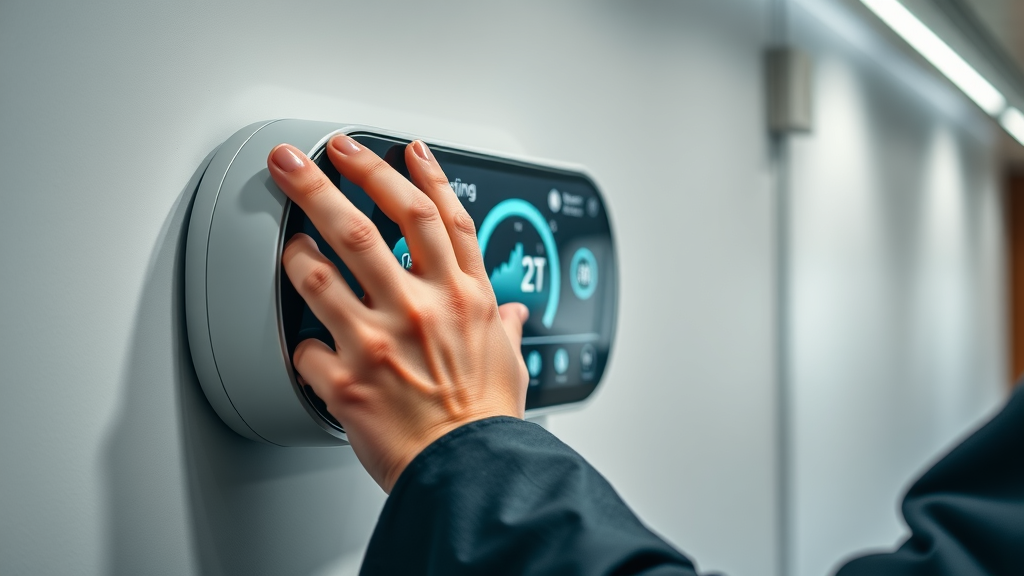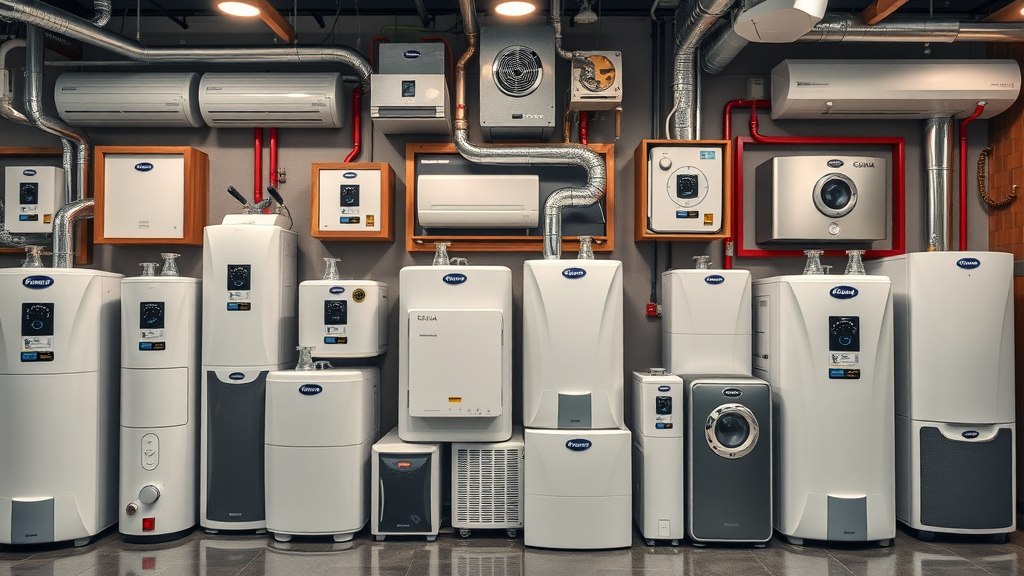Did you know that electric underfloor heating for businesses can cut your annual energy bills by up to 15% when compared to traditional heating systems? That’s not just a cost saving—it’s a chance to future-proof your business, create a more inviting workspace, and meet modern energy standards head-on. In today’s ultra-competitive climate, offices and commercial properties that adopt smarter, more efficient underfloor heating systems see better tenant retention, improved customer comfort, and real returns on investment. Ready to discover how your business can win?
Electric Underfloor Heating for Businesses: Surprising Trends and Market Impact
As energy prices rise and organisations demand greener, more efficient buildings, electric underfloor heating for businesses has gained massive momentum across the UK. This heating solution, once considered a luxury, is rapidly becoming a standard feature in new commercial developments, office refurbishments, and high-traffic retail environments. What’s driving the shift? Modern underfloor heating systems are not only more energy efficient, but they also provide even heat distribution—eliminating those cold spots notorious in traditional radiators or air-based heating systems. Businesses report measurable improvements in staff productivity and customer satisfaction, linking the enhanced comfort directly to underfloor heat technology. For decision-makers, these trends translate into lower ongoing costs, a greener business profile, and a visible point of difference in a demanding property market.

“Commercial buildings using electric underfloor heating save up to 15% annually on energy costs versus traditional systems.” — Heating Experts
What You’ll Learn in This Guide to Electric Underfloor Heating for Businesses
- Key features of electric underfloor heating for businesses
- Benefits over traditional and water-based underfloor heating
- How electric underfloor heating systems operate
- Best brands and product ranges
- Pricing, running costs, and installation factors
- Expert advice for selecting and specifying heating mat, cable, or full underfloor systems
- FAQs, buying tips, and professional support
Why Electric Underfloor Heating for Businesses? New Industry Standards and Demand
Businesses today are under increasing pressure to provide energy-efficient environments and meet modern expectations for comfort. Electric underfloor heating answers these demands, offering a solution that’s adaptable to a wide range of commercial spaces—from open-plan offices to hospitality suites and high-traffic retail floors. As building standards evolve and environmental criteria tighten, electric underfloor heating stands out by minimising energy waste, supporting ambitious carbon reduction goals, and delivering seamless, reliable warmth where and when it’s needed. With proven returns in staff wellbeing and operational savings, making the switch positions businesses not just as occupants, but as forward-thinking leaders in property management and sustainability.

Meeting Modern Commercial Building Expectations with Electric Underfloor Heating
Today’s tenants and customers expect more from their workspaces: consistent warmth without intrusive radiators, clean lines, and cutting-edge energy performance. Electric underfloor heating systems deliver exactly that. They can be embedded under almost any floor covering—tiles, carpets, wood, or vinyl—and work equally well in newly built premises and retrofits. Because underfloor heat rises evenly across the room, it eliminates the chilly shadows left by traditional radiators and ensures every corner of your space is comfortable. In modern commercial property, this can be a selling point, boosting occupancy rates and setting your building apart from less innovative competitors.
The Wide Range of Applications for Electric Underfloor Heating
What makes electric underfloor heating a favourite among property professionals? Flexibility. Offices, retail stores, hotels, restaurants, gyms—almost every commercial environment can benefit from electric underfloor heating. It suits large open areas, tight corridors, and even awkwardly shaped rooms. There’s a wide range of heating mats and heating cables specially designed for specific floor types and business requirements, making it possible to tailor the ideal heating system for your property. Whether you’re outfitting a flagship store or revitalising a boutique office, electric underfloor heating adapts to your needs—and scales with your ambitions.

How Electric Underfloor Heating Systems Work for Businesses
At its core, electric underfloor heating relies on discreet heating elements installed beneath the floor surface. These take the form of thin, flexible heating mats or robust heating cables that distribute heat evenly across the entire room. When activated by a thermostat or smart control, the system delivers radiant heat directly upwards, warming occupants and furnishings alike—without the noise, airflow, and dust associated with forced-air heaters. This setup not only provides greater comfort but reduces temperature fluctuations and energy loss common with traditional methods. Businesses also appreciate that once installed, electric underfloor heating is virtually maintenance-free and fully compatible with advanced controls and smart office systems.
Heating Mat vs Heating Cable: Which Electric Underfloor Heating System Is Right for Your Business?
Choosing between a heating mat and a heating cable depends on your project’s size, floor type, and budget. Mats are ideal for regular-shaped open spaces—they’re quick to install, with cables pre-spaced on a mesh backing. Cables, meanwhile, offer flexibility for shaped rooms or areas requiring custom coverage, like around fixed cabinetry or architectural features. They take a little longer to lay but offer unrivalled adaptability. Both options deliver the even, silent warmth commercial tenants adore, but each shines in specific business settings. Always pair your system with the right insulation boards to maximise efficiency and keep running costs low.
| Feature | Heating Mat | Heating Cable |
|---|---|---|
| Best Use Case | Open-plan offices, large retail areas, easy installations | Complex layouts, shaped rooms, retrofit applications |
| Installation Speed | Fast - pre-assembled on mesh | Slower - individually spaced |
| Cost | Generally lower for simple spaces | Variable; cost-effective for complex areas |
| Floor Compatibility | Most standard floors (tile, carpet, wood, vinyl) | Flexible for awkward shapes, raised floors |
| Typical Applications | Retail, offices, commercial bathrooms | Under desks, receptions, heritage conversions |

Integrating Insulation Boards for Maximum Performance and Efficiency
To get the best performance from any electric underfloor heating system, proper use of insulation boards is essential. These rigid panels are placed beneath the heating mat or cable, helping to reflect heat upwards into the room rather than letting it escape into the subfloor. By minimising heat loss, insulation boards ensure rooms reach set temperatures faster and maintain heat longer—slashing energy usage and running costs. When installed with care, insulated underfloor heating systems outperform traditional systems on both comfort and efficiency, delivering measurable contributions to operational savings and a greener business footprint.
Comparing Electric Underfloor Heat to Water-Based Systems
When considering underfloor heating, the main alternatives are electric underfloor heating and water underfloor heating systems (“wet” systems). Water-based options circulate hot water through pipes laid beneath the floor, heated by a boiler or heat pump. While well-suited for new builds with large open spaces, these systems often involve higher installation complexity, more intrusive floor build-up, and require ongoing maintenance. Electric systems stand out for simplicity in installation, minimal downtime, and rapid responsiveness—all crucial for commercial sites that can’t afford lengthy interruptions. The table below outlines the differences to help you decide what’s best for your property.
| Feature | Electric Underfloor Heating | Water Underfloor Heating |
|---|---|---|
| Installation | Quick, minimal build-up, ideal for retrofits | Complex, intrusive floor build-up, best for new builds |
| Maintenance | Low, almost maintenance-free | Annual servicing and repairs needed |
| Initial Cost | Lower for smaller & standard projects | Higher, especially for small areas |
| Running Cost | Optimised with insulation; lower in well-managed properties | Potentially lower if supplied by efficient boiler/heat pump |
| Responsiveness | Heats up fast, precise control | Slower to respond |
| Suitability | Wide range of business spaces, including refurbs | Best for new developments/large ground floor spaces |
Key Benefits: Why Businesses Choose Electric Underfloor Heating
- Reduced running costs versus traditional heating systems
- Even heat distribution for workspaces and customer areas
- Silent operation and invisible install
- Low maintenance and future-proofing the property
- Fast installation (minimal business interruption)
Long-term Energy Savings and Carbon Reduction Potential
Businesses considering electric underfloor heating are often drawn by the long-term cost savings and energy performance over traditional heating systems. Electric systems work best when controlled efficiently and paired with smart occupancy sensors or programmable thermostats. Companies enjoy utility bill reductions, a smaller carbon footprint, and crucial support for ESG (Environmental, Social, Governance) targets. With energy rates unlikely to fall, every percentage point saved on heating bills is a win for the bottom line and the planet.
“Switching to electric underfloor heating helped us attract sustainability-minded tenants.” — Commercial Property Owner
Selecting Your Electric Underfloor Heating System: Expert Advice from Peak Underfloor Heating
With a wide range of electric underfloor heating products available on the market, expert advice is invaluable for making an informed decision. Peak Underfloor Heating offers tailored solutions to match floor type, business use, and performance expectations. Our advisors help weigh up options like heating mat versus heating cable, insulation board selection, and compatibility with your existing floor and floor covering. We take the guesswork out, ensuring every installation is cost-effective and trouble-free.
Assessing Space: Which Electric Underfloor Heating Products Are Suited to Your Commercial Needs?
The best system for your business depends on room shape, traffic, and how quickly you need to complete the fitout. For wide open areas, heating mats are fast and convenient to fit, reducing business downtime. For unusual layouts—think receptions, lobbies, or uniquely shaped rooms—heating cable systems flex around obstructions and architectural features. Our team can recommend the best underfloor heating work for every environment, and we’ll ensure no area is left with cold spots. A site visit and consultation are usually the first step toward an optimal, future-proof heating result.

Understanding Heating System Controls: From Basic Thermostats to Smart Management
The way you manage your system makes all the difference to comfort and cost. Entry-level thermostats are reliable and easy to use, but businesses can achieve much more with smart management solutions. App-based controllers, remote adjustment, and integration with building management systems let you match heating outputs to occupancy and external conditions. This not only sharpens energy savings, it gives you nuanced control over individual zones—perfect for adaptable workspaces or 24/7 operations. Peak Underfloor Heating helps clients choose and configure controls that make everyday management quick, easy, and efficient.

Specifying Insulation Boards and Accessories for Energy-Efficient Outcomes
Accessories may seem minor, but in practice they’re central to the performance and lifecycle cost of your underfloor heating system. Premium insulation boards optimise the transfer of heat upward, minimising waste and reducing the run time needed to maintain temperature. Peripheral products—from monitors to moisture barriers—help meet the unique requirements of commercial properties and protect your investment. Expert advice on underfloor heating ensures all elements support efficient, long-term operation, making every pound you spend work harder for your building.
Electric Underfloor Heating for Businesses: Costs, Prices & Savings Explained
| Product Type | Area Size (m²) | Installation Cost (approx.) | Estimated Running Cost / Year |
|---|---|---|---|
| Heating Mat | 50 | £2,100 - £2,500 | £480 - £700 |
| Heating Cable | 80 | £3,300 - £4,100 | £720 - £1,120 |
| Full System with Smart Controls | 120+ | £5,400 - £6,800 | £960 - £1,600 |
Installation costs vary by area, floor type, and system specification. Running costs are typically much lower than oil, gas, or traditional electric convection heating, especially when paired with proper insulation boards and high-performance smart controls.
Is Electric Underfloor Heating Expensive to Run for Businesses?
For most commercial buildings, electric underfloor heating running costs are competitive with—if not lower than—traditional systems. The key drivers are smart system management, optimised insulation, and efficient scheduling that matches occupancy. By maintaining consistent temperatures and using less peak power, these systems avoid the costly spikes seen with older heating methods, leading to predictable bills and happy occupants.
How to Calculate Payback on Your Electric Underfloor Heating Investment
The payback period depends on installation scope, energy savings, and any grant or incentive support available for energy-efficient upgrades. Most commercial sites achieve full payback between 4 and 8 years thanks to reduced running costs, avoided maintenance, and increased property value. For many, the intangible benefits—tenant satisfaction, improved ESG credentials, and simplified operations—make the switch a win from day one.
Installation Process: How to Fit Electric Underfloor Heating in Commercial Properties
Installing electric underfloor heating in commercial buildings is a planned, step-by-step process. Our specialist installers operate with minimal business interruption, often working in off hours or in staged zones. The typical installation involves clearing and preparing subfloors, laying insulation boards, rolling out mats or positioning cables, and integrating controls with your preferred building management system. Clear communication and planning are central to delivering great outcomes—ensuring every system is ready on time, on budget, and fit for purpose.
Preparing the Subfloor and Laying Heating Mats or Cables
A successful installation always starts with a flat, clean subfloor. The team carefully measures and marks the area, installs high-quality insulation boards, and then fits the heating mat or cable according to the designed layout. Proper alignment with workspace zones, desks, and high-traffic paths ensures even warmth throughout. Once laid, systems are thoroughly tested before connecting thermostats or smart controllers.

Ensuring Optimal Performance with Proper Insulation Board Installation
Insulation boards do more than just boost heat-up times—they’re crucial for limiting long-term costs. Used under every electric underfloor heating system, they preserve efficiency and ensure the system delivers for decades. Peak Underfloor Heating only uses premium-grade boards matched to your floor and heating choice, and our team provides guidance on both installation and aftercare. Expect high comfort, low energy bills, and confidence from day one.
Product Options: The Best Electric Underfloor Heating Brands and Systems for Businesses
- Overview of top-performing electric underfloor heating brands
- Product warranties and certifications explained
- Choosing the right electric underfloor heating solution for your business

From market leaders like Warmup, Devi, and Heat Mat to value-focused ranges, there’s a solution for any business. These brands consistently deliver on functionality, longevity, and independent certifications for safety and performance. Most offer extended warranties, with some covering up to 25 years, and support a wide range of controls from basic thermostats to advanced building management integration. Choosing the right system often comes down to application, required coverage, and budget—but with expert advice, every investment pays off in satisfaction and lower operational risk.
Electric Underfloor Heating for Businesses: Real-World Case Studies
Take the example of a busy high street retailer: after replacing tired convection heaters with an electric underfloor heating system, both customers and staff reported a noticeable uplift in comfort and energy. The system’s silent operation and even warmth eliminated cold spots, reducing complaints and boosting time spent in the store. Service call-outs fell, running costs stabilised, and management credited the installation with attracting tenants interested in their commitment to green building standards.
“Electric underfloor heating transformed our retail space – staff and customers love the comfortable atmosphere.”
FAQs: Everything Commercial Property Owners Need to Know About Electric Underfloor Heating
What are the disadvantages of electric underfloor heating?
While electric underfloor heating systems are efficient and unobtrusive, they may not be the best fit for very large open spaces requiring high heat output, as running costs can be higher than central systems like a heat pump in some scenarios. Also, correct installation is crucial—without proper insulation boards and controls, efficiency drops. Always consult heating experts to ensure your system is suited to your space for optimal results.
Is electric underfloor heating very expensive to run?
Electric underfloor heating is designed for efficiency, especially with premium insulation boards and smart controls. Although electricity can cost more per unit than gas, the precise control and reduced heat loss usually balance the equation. Most commercial premises see similar or even lower total annual energy bills compared to older radiator or forced-air systems, especially after removing dead zones and cold spots.
What is the best brand of electric underfloor heating?
The best brand for your project depends on coverage needs, control options, and budget. Leading brands such as Warmup, Devi, and Heat Mat are preferred by professionals thanks to proven reliability, UK-based support, and competitive warranties. For tailored advice, it’s always best to get in touch with a specialist who can match the right product to your building.
Does underfloor heating consume a lot of electricity?
No, modern electric underfloor heating systems use sophisticated controls and insulation to minimise wasted energy. They deliver steady, targeted warmth and avoid the peaks and troughs seen in traditional systems. When properly specified and zoned, they use electricity efficiently, especially compared to older electric radiators or convection heaters.
Key Takeaways: Why Electric Underfloor Heating for Businesses Is a Sound Investment
- Electric underfloor heating provides efficient, even heat for commercial spaces
- Quick installation and low future maintenance costs
- Versatility and adaptability for a wide range of business uses
- Partnering with expert installers guarantees optimal outcomes
Ready to Upgrade? Get in Touch with Peak Underfloor Heating
It can be difficult to know exactly what system is best for your application, so if you’re still unsure, please feel free to contact us and one of our consultants will be happy to discuss your exact requirements. Call 01246 387120, or Email us at info@peakunderfloorheating.com
It can be difficult to know exactly what system is best for your application, so if you’re still unsure, please feel free to contact us and one of our consultants will be happy to discuss your exact requirements. Call 01246 387120, or Email us at info@peakunderfloorheating.com
Conclusion
Take the next step: invest in electric underfloor heating for your business today and experience lower costs, happier occupants, and unmatched efficiency.
Sources
- Energy Saving Trust – https://www.energysavingtrust.org.uk/advice/underfloor-heating/
- Carbon Trust – https://www.carbontrust.com/resources/guides/energy-efficiency/heating-hot-water/underfloor-heating/
- Peak Underfloor Heating Ltd – https://www.peakunderfloorheating.com/
- UK Green Building Council – https://www.ukgbc.org/wp-content/uploads/2018/09/Energy-Saving-in-Offices.pdf
Electric underfloor heating systems offer numerous advantages for commercial spaces, including energy efficiency, consistent warmth, and enhanced comfort. For a comprehensive understanding of how radiant floor heating can be applied in various commercial settings, consider reading Radiant Floor Heating in Commercial Applications. This resource explores the benefits of underfloor heating in retail spaces, hospitality industries, office buildings, and more. Additionally, The Best Radiant Floor Heating for Commercial & Industrial Buildings provides insights into the effectiveness of electric radiant floor heating as a solution for commercial properties, discussing factors such as lower operating costs, flexible installation options, and efficient, clean, and quiet heat. If you’re serious about enhancing your business’s heating efficiency and comfort, these resources will provide valuable insights and guidance.
 Add Row
Add Row  Add
Add 









Write A Comment